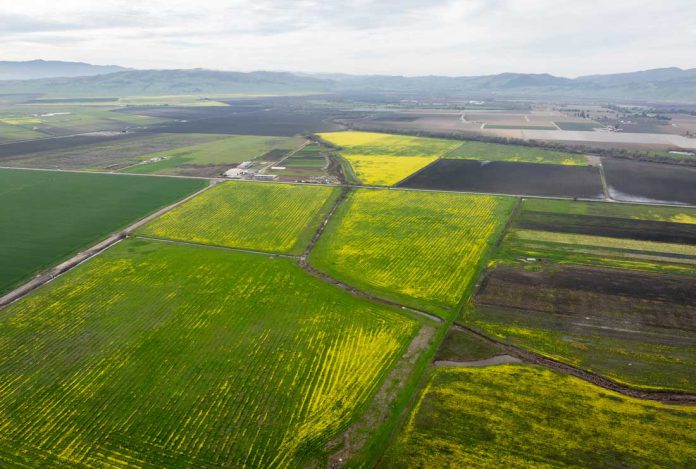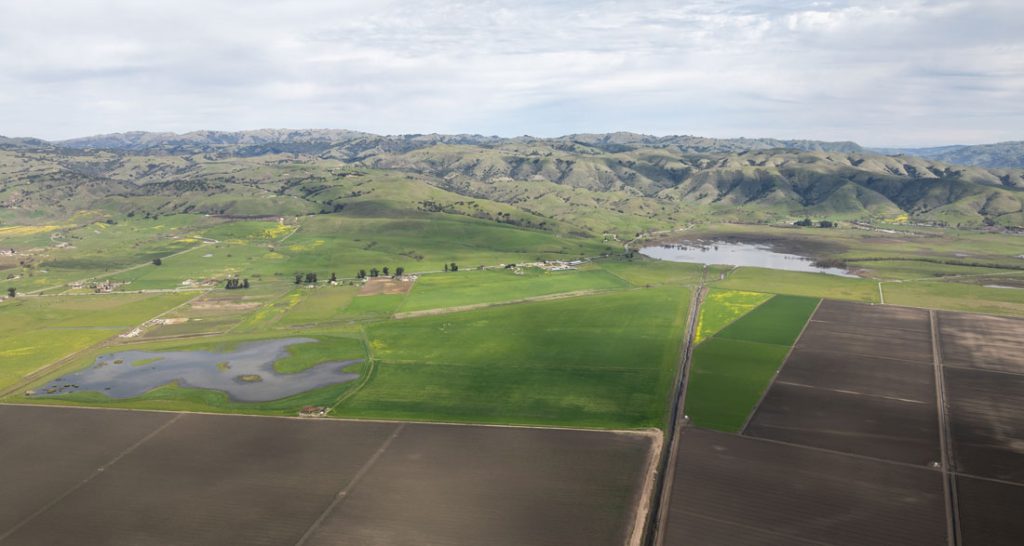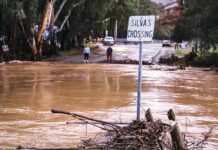
Three connected agricultural properties straddling the border of San Benito and Santa Clara counties were recently purchased by conservation organizations, ensuring the lands totaling more than 600 acres will remain an active link in a vital regional ecosystem.
The Peninsula Open Space Trust on Oct. 6 announced the acquisition of the properties—the 185-acre Bloomfield South Farm; 165-acre Gonzales Ranch; and 318-acre Ojeda Ranch. The properties were acquired in separate transactions totaling about $7.8 million, POST said in the announcement.
The properties are within the Upper Pajaro River Valley and the Soap Lake floodplain, and the purchase represents a chance for POST and other environmentalists to demonstrate the regional benefits of agriculture and environmental restoration working together, POST said.
Partners in the recent purchase include The Nature Conservancy, Santa Clara Valley Open Space Authority, San Benito Agricultural Land Trust and others.
“Working with local partners to restore this landscape over time will support a mosaic of agricultural and natural lands that benefits biodiversity, climate resilience and sustainable working lands,” said Gordon Clark, president of POST. “We are especially grateful to the state’s Wildlife Conservation Board for their generous grant to support a restoration and land use planning process for these three properties.”
The Pajaro River watershed is recognized as a vital water source that supports an agricultural economy that generates close to $1 billion in crops annually. These properties—one of which is already protected by a conservation easement—are currently used for active row crop agriculture or livestock grazing, POST noted.
POST said a long history of human intervention in this watershed has impacted its ecological function, which is now further exacerbated by climate change. The region frequently experiences flooding, resulting in ongoing challenges for agriculture and other uses.
The Pajaro River originates near Sope Lake (also known as San Felipe Lake) in Santa Clara Valley, and flows east to west before emptying into the Pacific Ocean at Monterey Bay. The area has historically been home to wetlands, streams and meadows. The Soap Lake floodplain absorbs heavy seasonal rains, helping mitigate flood risks to downstream communities.
The area around and including the Pajaro River headwaters is also part of the ancestral lands of the Amah Mutsun people, who stewarded the land for thousands of years, POST noted.
During the past 150 years, most of the property in the upper Pajaro River Valley has been converted to agricultural use, including the use of canals to divert water from the river, according to POST.
“As a result, the river’s natural functions were disrupted, and today, the landscape and communities, especially those downstream, are less resilient overall to the impacts of more severe storms and flood events,” says a press release from POST. “Recent examples include the extreme flooding that occurred in 2023 and caused an estimated $790 million in damage to agriculture, housing and businesses in the area.”
The landscape is also an important water source, as well as a habitat for birds and other native wildlife. POST said a land restoration process that applies modern science and proven techniques could strengthen the natural connections between opposite sides of the Pajaro River, and enhance the region’s biodiversity.
“We value our landowner partners in San Benito County and are grateful to POST for helping them achieve conservation outcomes for their land,” said Lynn Overtree, executive director of SBALT. “Conserving land that sustains productive agriculture is one of SBALT’s primary objectives. We’re pleased that POST shares our vision for sustainable agriculture alongside natural resources and open space protections to generate climate resilience benefits for our community.
“We are excited to be involved in the restoration planning process for these three properties in the Upper Pajaro Valley.”

The properties
Bloomfield South Farm is the northernmost of the three acquired properties, which POST purchased in a $2.4 million transaction in Santa Clara County.
The property has been protected since 2003 by a conservation easement held by the OSA.
POST said it can now pursue riparian restoration planning along more than a half-mile stretch of the Pajaro River that flows through Bloomfield South Farm.
Gonzales Ranch straddles the boundary of Santa Clara and San Benito counties. POST partnered with The Nature Conservancy to purchase the property on Oct. 2 for $667,000. The Pajaro River flows through Bloomfield South into Gonzales Ranch.
Gonzales Ranch is currently leased for seasonal regenerative livestock grazing, POST said.
Ojeda Ranch is located in San Benito County, along the southeastern edge of Gonzales Ranch. POST purchased the property from the Fehlman family for about $4.8 million. The property is impacted by seasonal storm events and is currently farmed for hay and vegetable row crops.
“Our family owned and cared for this land for over 30 years, and there’s no question that seasonal flooding is a real challenge and only getting worse,” said Kathy Fehlman, whose family sold Ojeda Ranch to POST. “We are pleased that POST will continue what our family started and that they will explore the current water and land use challenges so that sustainable agriculture can continue to thrive here.
“It’s an enduring legacy that is a really great outcome for everyone.”
POST said it plans to work with individuals and organizations to develop land use programs for the three properties, aiming to incorporate restoration and sustainable agriculture.














